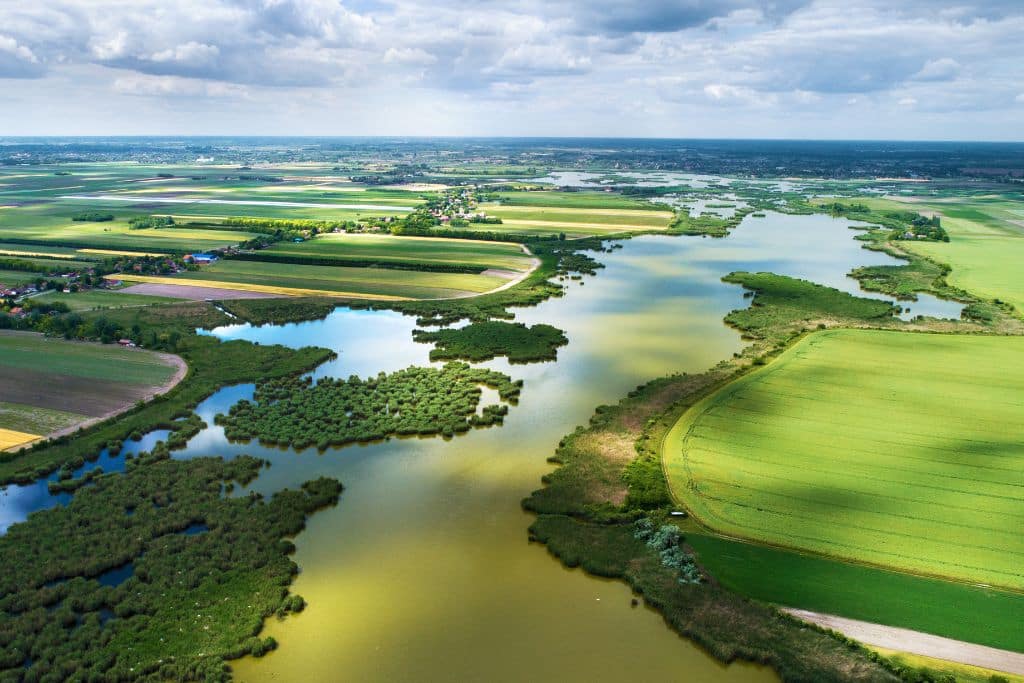Carole Saint-Laurent, Head of the Forest and Grassland team in the Centre for Conservation Action at IUCN and co-founder of the Bonn Challenge, discusses the importance of data tracking and monitoring for restoration pledge success, tying to the launch of their inaugural Restoration Barometer Report. The Barometer is a restoration tracking tool already used by more than 20 countries to monitor and report on restoration progress across all terrestrial ecosystems, including coastal and inland waters. Its widespread adoption is key to the success of large-scale restoration efforts to protect biodiversity.
—
When COP27 drew to a close, many were left feeling disheartened by what they saw as an incomplete accounting of the climate crisis and necessary actions to combat it. “We’re not meeting the targets, we’re not meeting the timetables,” said Professor Dana R. Fisher, a sociologist with The Brookings Institution who followed the talks closely. And in many ways, she’s right.
The convention elicited concern for its slow-moving progress in tackling the crisis from those of us at the International Union for Conservation of Nature (IUCN), although we were pleased to see the potential of nature-based solutions recognised. The clear recognition will provide Parties with a robust and much-needed framework to harness nature’s ability to address climate adaptation and mitigation.
We were more eager still to see what the UN Biodiversity Conference (COP15) in Montreal would bring and after days of negotiations, the restoration community was rewarded with the largest land and ocean conservation commitment in history. The Kunming-Montreal Global biodiversity framework contains 23 targets that participating countries have committed to achieving by 2030, including the conservation of at least 30% of all land and water on Earth.
While this news is worthy of optimism, much work must be done to bring these commitments from pledge to action—and with no time to spare. We’re living in a time when our survival depends on the success of global efforts to protect nature, yet we are losing it at an unprecedented rate. Of the more than 150,000 species assessed to date by IUCN’s Red List, more than 42,000 are threatened with extinction. Even more harrowing, 32% of the world’s forest area has been razed; more than 85% of wetlands are gone; and 50% of coral systems are in peril.
You might also like: 10 of the World’s Most Endangered Animals in 2023
And as critical as this framework is to reverse the decline in our natural world, it is not the first key moment in the history of ambitious restoration agreements. When the Bonn Challenge launched in 2011, it was heralded as a major achievement in restoring the world’s degraded and deforested lands. Diverse countries signed on to undertake restoration goals that would contribute to restoring 150 million hectares of forest landscapes by 2020. The 2014 UN Climate Summit endorsed and expanded this target to 350 million hectares by 2030.
Bold ambition is necessary but, as those of us working in this world know, pledges alone are not enough. The real challenge lies in the implementation. While there are significant advances being made in all parts of the world, the scale and extent of restoration efforts are still falling short of what’s possible and needed. Without a course correction, the Global Biodiversity Framework will meet the same resistance.
There are many reasons for this, including the lack of adequate funding and the political challenge of taking the long-term view needed for effective restoration. The most critical aspects of unlocking action at the necessary scale are the need to better capture, understand, and communicate progress – along with what’s driving it. This is why monitoring and tracking restoration programmes are key to large-scale restoration success. The International Union for Conservation of Nature’s (IUCN) Restoration Barometer was created with this in mind.
Countries can use the tool to track and display progress on a public dashboard in a quantifiable and demonstrable way. It breaks down the milestones of a restoration programme to identify the actions, policies, and other building blocks that led – or didn’t lead – to results. Decision-makers can then take that information to prioritise and scale-up future action.
The Barometer provides opportunities for countries with established programmes to forge partnerships, secure additional resources by having their work validated, attract international donors, and scale efforts. Ministries leading the restoration efforts in Mexico, for example, have said that showcasing the positive impacts of their work helps to shore up political support and domestic funding allocations for restoration projects.
We need to empower countries and other leaders to build their own restoration stories. To date, 22 countries are using the Barometer to track progress on restoration targets across all terrestrial ecosystems, including coastal and inland waters. It will also soon include progress being made on company restoration pledges. Restoration is an ongoing process that has yet to reach its full potential, and this is its key moment.
You might also like: The Remarkable Benefits of Biodiversity


















